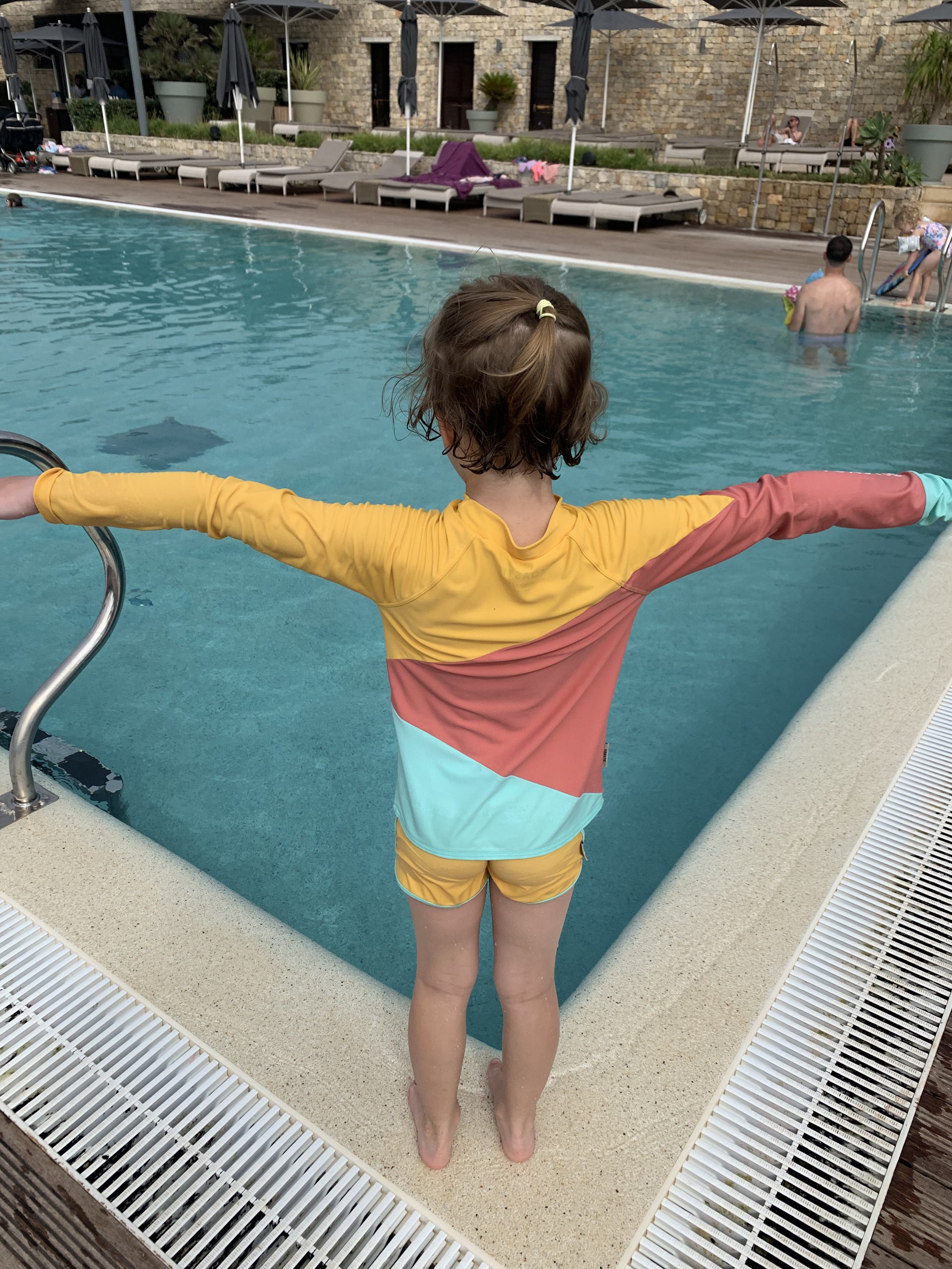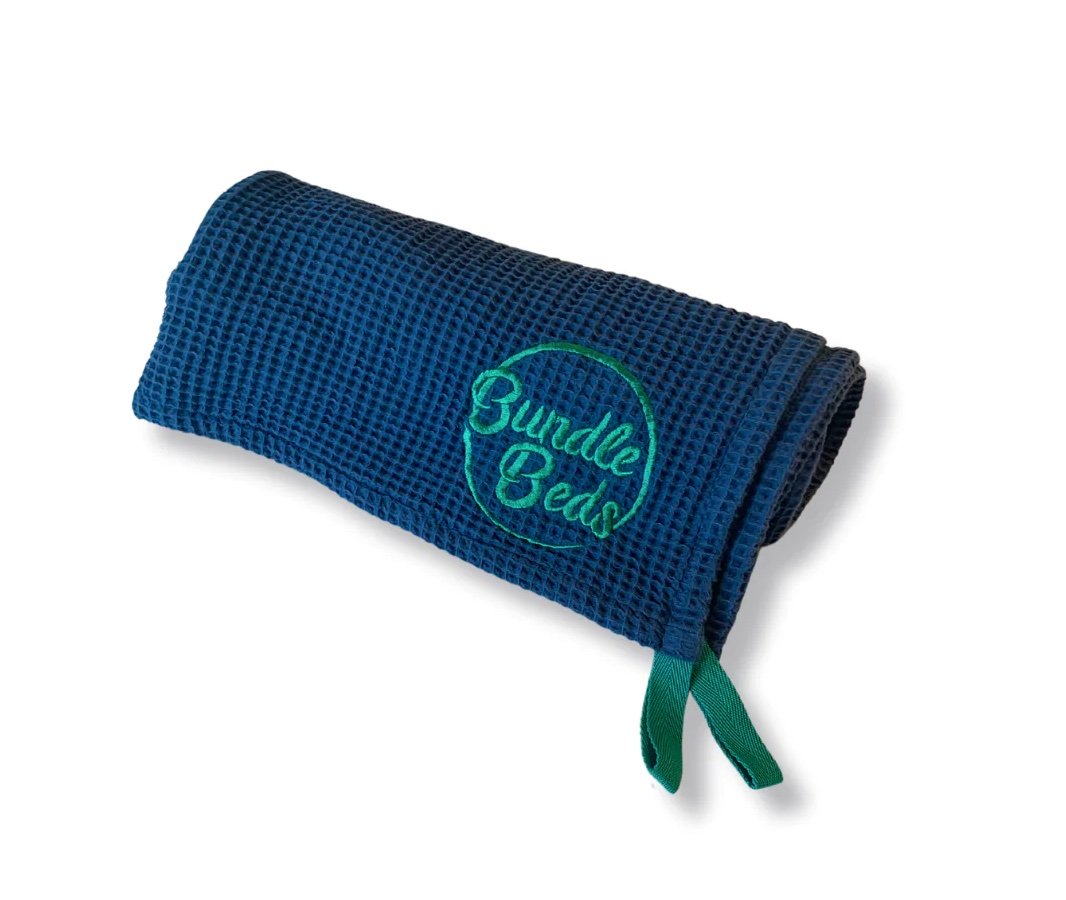Summer Sun: Top Tips for Staying Safe and our Beach and Poolside Essentials
are you looking for some tips for keeping safe in the sun with your children?
Summer is a magical time for children to get outdoors and explore in the sunshine. Europe in 2023 had seen some of the hottest temperatures on record, so if you have a holiday booked - it’s more important than ever to stay sun safe and shield your children (and yourself) against harmful UV rays.
As parents and guardians, we're always on a mission to ensure our little ones enjoy a fun-filled, safe environment, especially when out in the sun. Whether your summer plans include a sandy beach, a tranquil sea, or a refreshing pool, it's essential to keep your child's safety in mind. Here's a comprehensive guide on sun safety, including practical clothing choices, tips, and useful hacks to ensure your children are well-protected while they soak up the fun and sun.
What are UV Rays?
UV rays, or ultraviolet rays, are a type of electromagnetic radiation that comes from the sun and is invisible to the human eye. They are categorised into different types based on their wavelength. There are three main types of UV rays:
UVA (Ultraviolet A): UVA rays are the longest wavelength UV rays and are the most prevalent in sunlight. They can penetrate deep into the skin and are often associated with skin ageing and wrinkling. UVA rays are also commonly used in tanning beds.
UVB (Ultraviolet B): UVB rays are shorter in wavelength and have higher energy than UVA rays. They cause sunburn and are a significant factor in the development of skin cancer.
UVB rays are partially absorbed by the Earth's atmosphere, but they can still cause damage to the skin and eyes.
UVC (Ultraviolet C): UVC rays have the shortest wavelengths and the highest energy.
Most UVC rays from the sun are absorbed by the Earth's ozone layer and do not reach the surface. UVC rays are extremely harmful and can cause severe skin burns and eye damage. They are often used for disinfection purposes in controlled settings.
How to stay safe in the sun
Dermatologist Natalya Fox recommends “Sun protection in babies and children is really important because their skin isn't yet mature enough to produce enough melanin to protect them from the sun, like an adult. General advice for babies under the age of six months old, is to avoid direct sunlight for prolonged periods of time. When they are above six months, try to avoid prolonged direct sunlight by doing things like wearing a hat, using a sun parasol, and wearing long sleeved water protection, like a rash vest when out and about. In terms of sunscreen, they should use a mineral based high factor sunscreen, minimum factor 50. By mineral. I mean, iron or titanium oxide containing, because this is better for sensitive or eczema prone skin”.
The Right Clothing: Shielding Children from Harmful UV Rays
The first line of defence against the sun's harmful rays is proper clothing. It’s tempting to pop your little ones in cute swim suits but they sadly offer little protection. Here are some key clothing items that will help protect children from sunburn and UV exposure:
Sun Hats: Invest in wide-brimmed hats, or hats with a back flap that offer shade to the face, ears, and neck. Opt for hats with UPF (Ultraviolet Protection Factor) material for enhanced sun protection.
Sunglasses: Quality sunglasses with UV protection are crucial for shielding the delicate eyes of children. If your littler ones are resistant to keeping them on, you’re not alone, but we’ve found these baby glasses with back straps work wonders and once they have worn them for a day or two on holiday they tend not to notice anymore!
Lightweight Clothing with UPF: Dress children in lightweight, breathable clothing that covers their arms and legs. Look for clothing labelled with UPF ratings, which indicate the level of sun protection they offer.
Rash Guards and Swimwear: When swimming, choose swimwear with adequate UPF protection and opt for long-sleeved rash guards to protect the skin from the sun while in the water. UPF measures the amount of UV radiation that can penetrate fabric and reach your skin, a rating of 50+ is recommended and recognised by leading skincare experts.We absolutely love the range from Töastie Kids. Not only is this a certified carbon neutral line and the products sustainable (produced from recycled plastics) they are gorgeously buttery soft and protect up to UV 50. Our daughter tried and tested the long sleeved Ice Cream Sundae Swim Top and Shorts and got so many compliments during our trip! They come in a variety of bold colours which from a safety point of view was excellent, as we could always spot her on the beach. We also found the set super easy to take on and off when wet which is a godsend for wriggly (and impatient) children. They dried quickly and we’ve used it multiple times without any colour fade. You’ll hopefully get 2 summers out of these too due to generous and flexible sizing!
Foot Protection: Hot sand or concrete can burn feet. Water shoes can protect little feet from hot surfaces, sharp objects, and slippery pool decks. Opt for those with a toggle at the back to tighten them up if needed as they can get looser when wet.
Keeping Children Safe in the Sun
To maximise sun safety for children, consider these tips and hacks:
Seek Shade: Encourage children to play in shaded areas, especially during peak sunlight hours from 10am to 4pm when UV rays are at their strongest. Remember although it seems obvious, the sun moves and so does the shade, so keep adjusting your position throughout the day.
Apply generous amounts of suncream: Apply a broad-spectrum sunscreen with an SPF of at least 50 on all exposed areas, including the face, ears, neck, and hands. Reapply every two hours, or more frequently if swimming or sweating. It’s so easy to forget this but sunburn on holiday is no fun for anyone! Apply sunscreen on children at least 30 minutes before heading to the water. Waterproof sunscreens are recommended for swimming activities.
If you’re looking for an AMAZING reusable suncream applicator that will literally change your life (and meanyou don’t have to keep buying loads of disposable roll on bottles) these refillable suncream applications from Solar Buddies have been a total game changer for us. With a small foam applicator, they are easy to roll on (and soft, so no whinging from the kids) and you can fill them up with whatever larger bottle of suncream you have. It is so much cheaper in the long run. Our older child also takes hers to school on hot days and easily manages to put her cream on by herself.
Stay Hydrated: Keep children hydrated by offering plenty of water throughout the day. Dehydration can worsen the effects of sun exposure. If you can, avoid plastic water bottles as these tend to leach microplastics into the water in hotter climates.
UV-Protective Umbrellas and Tents: Use beach umbrellas or tents with UPF protection to create a shaded oasis at the beach or poolside.
UV-Sensitive Wristbands or Patches: Consider using UV-sensitive wristbands or patches that change colour when exposed to UV rays. They act as a reminder for reapplying sunscreen or seeking shade. These Sunny Patches are great as they are easy to pack (flat) and if one gets lost it’s not a drama!
Beware of Reflective Surfaces: Remember that water and sand can reflect UV rays, increasing the risk of sunburn.
Cooling Accessories: Invest in misting bottles, or small fans to keep children cool in hot weather.
Around the pool and on the beach
It’s easy to become complacent on holiday as we relax and wind down - but it’s more important than even to teach children about water safety and never leave them unattended near the water, even if they know how to swim.
Swimming Lessons: Before you go on holiday, do consider enrolling your child in swimming lessons. It's a vital skill that greatly reduces the risk of drowning. Becky Adlington discusses the benefits…
Life Jackets or float vests are ideal for young children or inexperienced swimmers, - just make sure you use properly fitted life jackets when swimming in the sea or pool. This float vest with water wings by Zoggs is superb quality and easy to fit. Please note, never leave children unattended even when wearing armbands or flotation jackets.
Travel Towel: This is such a fantastic thing to pack as part of your holiday essentials as it tucks neatly in your beach bag, taking up a fraction of the space of a conventional beach towel and reduces the bulk. Gone are the days of horrid microfibre travel towels - Bundle Beds have just expanded their range to include revolutionary waffle style travel towels. Having road tested one of the first samples, we can say with confidence they are a true travel essential. These go beyond summer holidays and are also perfect for camping trips and swimming lessons. They are a generous size (fit around me as an adult!), are soft and absorbant without giving you the wet ‘ick’ feeling next to your body! We were also super impressed with the drying time, hung out in the sun they were dry in around 5-10 minutes.
Hygiene Precautions: Remind children to wash off sunscreen and sand after being in the water to avoid skin irritation.
Beach Flags: Teach your child to recognise and respect beach flags. Each colour signals specific conditions – for example, red often means dangerous conditions or no swimming.
Rip Current Awareness: If you're at the beach, educate your children about rip currents and what to do if they're caught in one (swim parallel to the shore until out of the current, then swim back to the shore).
By providing the right clothing, following essential tips and hacks, and implementing safety precautions at the beach, sea, and pool, we can ensure that our little adventurers have a memorable and safe summer. Shielding them from harmful UV rays will not only protect their skin from sunburn but also reduce the risk of long-term sun damage and skin cancer. So, let's embrace the warmth of the sun while also being diligent in protecting our children during their outdoor escapades.
Happy and safe summer!





